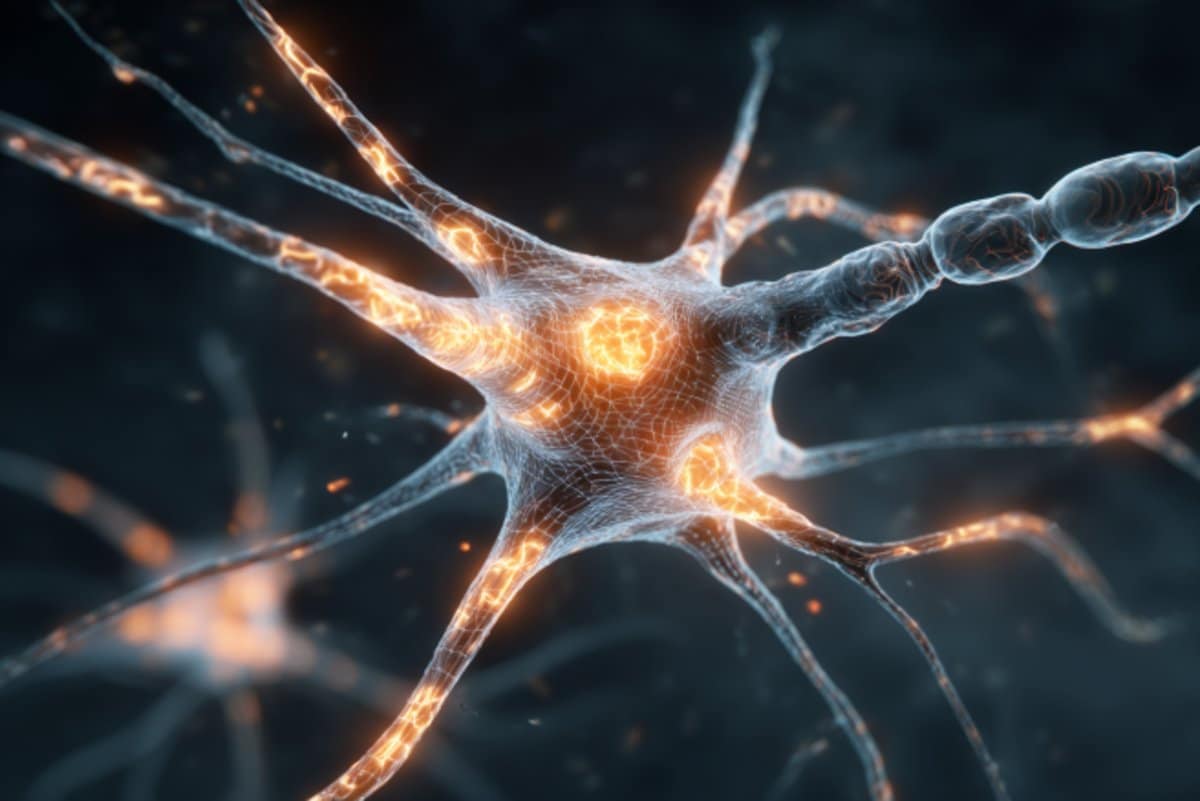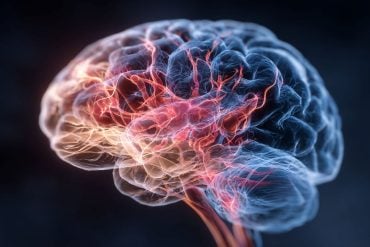Summary: A groundbreaking study reveals how neurons sense and transmit mechanical forces across their membranes—a key to understanding touch, movement, and development. Using precision laser-based optical tweezers, researchers discovered that tension travels faster in touch-sensing neurons than in movement-sensing ones.
The findings show that the arrangement of membrane proteins dictates how far and fast these mechanical signals propagate, shaping how cells interpret physical stimuli. This discovery advances mechanobiology by connecting the physics of force transmission with the biology of sensation and neural processing.
Key Facts
- Force Flow Mapping: Researchers used optical tweezers to measure how membrane tension travels through neurons at picoNewton precision.
- Patterned Control: Regularly arranged membrane proteins limit tension spread, enhancing localized responses to touch.
- Mechanobiology Breakthrough: Findings reveal how neurons convert mechanical strain into biochemical signals, bridging physics and neurobiology.
Source: ICFO
How do embryos develop? Why does the cortex of the mammalian brain fold? How do we feel touch at our fingertips?
These and other fundamental biological questions remain unsolved. Yet, scientists know they all rely on a common principle: the conversion of a physical stimulus into a biochemical signal.

The field of mechanobiology has recently gained new insights into which physical signals travel across cells and how far they spread. One key finding is that the rheological properties of the cell membrane (how it deforms and flows under stress) play a key role in such propagation. Still, many details of this intricate mechanism remain unclear.
ICFO researchers Dr. Frederic Català-Castro and Dr. Neus Sanfeliu-Cerdán, led by Prof. at ICFO Michael Krieg, together with the group of Prof Padmini Rangamani at the University of California San Diego, have now shed more light on how neurons transmit strains and stresses through their membranes.
In a Nature Physics article, they present the most detailed description to date of the molecular processes underlying this phenomenon. The study focuses on two different mechanoreceptors in the roundworm Caenorhabditis elegans: touch receptors, which respond very quickly to contact, and proprioceptors, which sense rapid deformations of the body itself during movement.
From curiosity to a valuable insight
Interestingly, this research began as a side project, sparked by previous conflicting reports in the literature.
“Our past work focused on the cytoskeleton, but we began to wonder whether the plasma membrane could also transmit mechanical information,” explains Prof. Michael Krieg, lead author of the study.
To investigate this, they used an optical tweezer apparatus, a tool based on highly focused laser beams that can both manipulate microscopic objects and measure forces with extraordinary precision.
In their experiments, the researchers attached two plastic microspheres to the axons or neurites of the isolated neurons, pulled them with the optical tweezers, and measured how the generated tension traveled from one to the other with exceptional accuracy (at the picoNewton and millisecond scales).
The results showed that tension propagation is faster in in touch receptors than in proprioreceptors. Even more intriguingly, the researchers found that propagation is influenced not just by the presence of obstacles in the membrane —mainly embedded proteins— but also by how these obstacles are arranged.
Mathematical modeling, together with experimental data, revealed that when obstacles are aligned in a regular pattern, they restrict propagation to shorter distances. According to the researchers, a controlled, limited spread of tension may not be a limitation.
Instead, it may help neurons pinpoint where a force is applied, distinguish between different stimuli, and generate localized responses without affecting the entire cell. This, in turn, could enhance the neuron’s ability for sensory processing or produce more adaptive motor responses.
In contrast, a random arrangement of obstacles allows tension to travel much farther, potentially helping cells distribute mechanical information across longer distances.
The 3D modeling set up in Rangamani’s lab was crucial to reveal the role of obstacle arrangement, since it allowed the researchers to finally bring their multiple observations into a common framework.
“The variability of the measurements, cellular heterogeneity and stochasticity of the underlying molecular processes imposed significant challenges to the interpretation of the results,” recalls Prof. Krieg. “Developing the 3D model changed everything. It gave us the consistency we needed to draw solid conclusions, turning an idea into one exciting insight.”
Toward fully understanding membrane tension propagation
Looking ahead, the researchers plan to explore other interactions of the cell with its environment, many of which have been largely ignored, as well as to discern the molecular identity of the obstacles and how they are regulated. “It may even be that plasma membrane tension itself regulates obstacles in a feedback/forward loop,” they speculate.
For now, the study already marks a major advance in mechanobiology. Dr. Eva Kreysing, expert in developmental neuroscience from the University of Cambridge who was not involved in the work, said to the Nature Physics journal: “This is a very timely paper.
“Given the important part that membrane tension has been shown to play in the regulation of cell function, it is very important to understand how localised this parameter is or how far it propagates.”
The next challenge will be to link these physical insights to specific molecular mechanisms, ultimately bridging the gap between mechanical forces at the membrane and the biological decisions they drive.
Key Questions Answered:
A: They found that neurons transmit mechanical tension through their membranes, and this process depends on how proteins are arranged within the membrane.
A: A regular pattern restricts tension spread, allowing precise, localized sensing, while a random pattern lets signals travel farther for broader communication.
A: It reveals how physical forces become biological information—laying the groundwork for understanding touch, proprioception, and even brain development.
About this mechanobiology and neuroscience research news
Author: Alina Hirschmann
Source: ICFO
Contact: Alina Hirschmann – ICFO
Image: The image is credited to Neuroscience News
Original Research: Open access.
“Obstacles regulate membrane tension propagation to enable localized mechanotransduction” by Frederic Català-Castro et al. Nature Physics
Abstract
Obstacles regulate membrane tension propagation to enable localized mechanotransduction
Forces applied to cellular membranes lead to transient membrane tension gradients. The way membrane tension propagates away from the stimulus site into the membrane reservoir is a key property in cellular adaptation.
However, it remains unclear how tension propagation in membranes is regulated and how it depends on the cell type.
Here we investigate plasma membrane tension propagation in cultured Caenorhabditis elegans mechanosensory neurons.
We show that tension propagation travels quickly and is restricted to a particular distance in neurites—projections from the cell body of a neuron. A biophysical model of tension propagation suggests that periodic obstacle density and arrangement play key roles in controlling the propagation of mechanical information.
Our experiments show that tension propagation is strongly dependent on the intact actin and microtubule cytoskeleton, whereas membrane lipid properties have a minimal impact. In particular, organization of the α/β-spectrin network and the MEC-2 stomatin condensates in a periodic scaffold acts as barriers to tension propagation, limiting the spread of tension.
Our findings suggest that restricting membrane tension propagation in space and time enables precise localized signalling, allowing a single neuron to process mechanical signals in multiple distinct domains and, thus, expanding its computational capacity.






